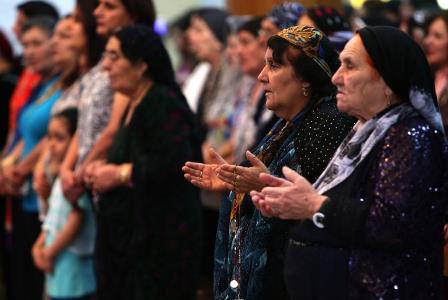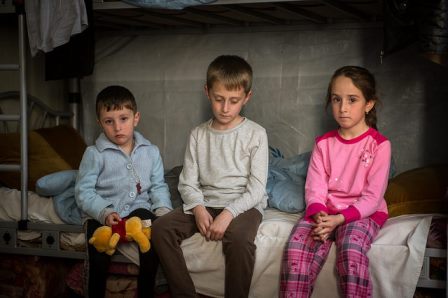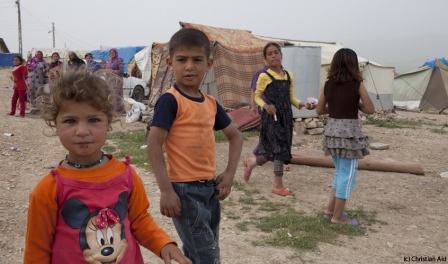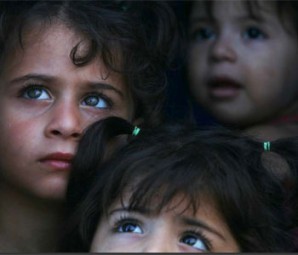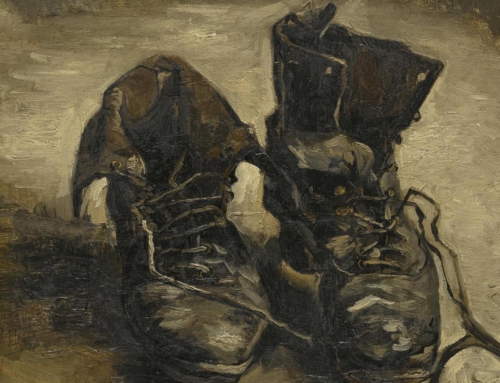When describing the effect of tragedy on an audience, Aristotle employs the term “catharsis” in his Poetics to denote the purgation of emotions, namely of pity and fear, which the audience experiences while the tragic hero learns something new of himself. Pity is not meant in its pejorative sense, wherein a strong but haughty person is moved to scorn due to the misfortune of the weak. Instead, it has to do with genuine compassion for the suffering of another human being in whom the audience sees a self-image. Viewers are moved to pity because, while looking at the tragic hero, they see a mirror in which their own image is reflected. To them, the possibility of being in the tragic hero’s situation is real. What follows from this sentiment is a sense of fear that a tragedy of that same magnitude could indeed befall them. Fortunately, the audience is also aware of the artificiality of the whole theatrical setting, and so this fear is accompanied by a sense of security.
When dreadful war stories are told, the audience also experiences a catharsis of sorts, because these stories challenge us to measure ourselves against the fortitude of those undergoing this suffering. They present to us a reality that is significantly different than ours, and they make us question our constitution in case we ever had to respond to similar catastrophes. “Who am I?” is the resounding question that echoes in the mind of the audience. This response from the audience is prompted due to its spatial or temporal removal from the incidents of tragedy and suffering.
In watching the recent tragedies of the Christians in Iraq and Syria—including massacre, rape, displacement, destruction of ancestral landmarks, and even the annihilation of national, social and familial identities—we who are far removed from these incidents may respond with pity and fear. We may feel sorry for those undergoing this fierce persecution because we understand that it could happen to us, and we may be afraid of having to respond to a similar situation. All this is still not a Christian response. It may be noble, it may be humanistic, it may be decent, but it is still not a full Christian response.
Aristotle’s sense of pity, as humanistic as it may be, still operates under a selfish motive, “I should feel sorry for a person because I would not want what is happening to him to happen to me.” To gain a deeper insight into the mystery of suffering, we need look no further than at the greatest historical drama that ever took place in human history—the crucifixion of Jesus. As Jesus was hanging on the cross, many “people stood watching” (Lk 23:35). Of these “people” who were “watching,” some “sneered,” some “mocked,” others “hurled insults at him,” while yet others “beat their breasts,” perhaps as a cathartic expression of pity and fear (Lk 23:35-48). All these are typical responses from human beings who may not have necessarily known the identity of Christ. On the other hand, those “who knew him” were “watching” him while standing “at a distance,” an indication of a slight spatial removal (Lk 23:49). Elsewhere, possibly the same group of people is said to be “standing near the cross” (Jn 19:25).
These two passages may be describing the same audience group; however, for our purposes, we can see a contrast between those who knew Jesus and were standing “at a distance” and those who were “standing near the cross,” of whom the “mother” of Jesus is said to be one (Jn 19:26). This variance in distance signifies the degree of knowledge each of these two groups have of Jesus, which also corresponds to the degree of suffering in which each group participated. The greatest of those participating in the suffering of Jesus was the one who was closest to Him and knew Him the best, His mother, the Blessed Virgin Mary. The participation of both of these two groups in Jesus’ suffering as they watched Him being crucified was not a cathartic response stirred up by a selfish sense of pity and fear. Instead, it stemmed from acknowledging the crucifixion of the Innocent Lamb as the greatest act of injustice ever committed by human wickedness. All other injustices committed against humanity at large, and against Christians in particular, can only be really understood in light of that original injustice that was carried out in the act of crucifixion.
Therefore, when watching or hearing of stories of the atrocities committed against the Christians in Iraq, Syria and other parts of the world, let us rise above the natural humanistic response of pity and fear. Let us see the face of Jesus in these Christians as the Blessed Virgin saw the face of her Son on the cross. Let us see in them Jesus massacred, Jesus displaced, Jesus estranged, and Jesus confused. In rendering support to these persecuted Christians, we are participating in Christ’s suffering, through which humanity is redeemed.
✠

